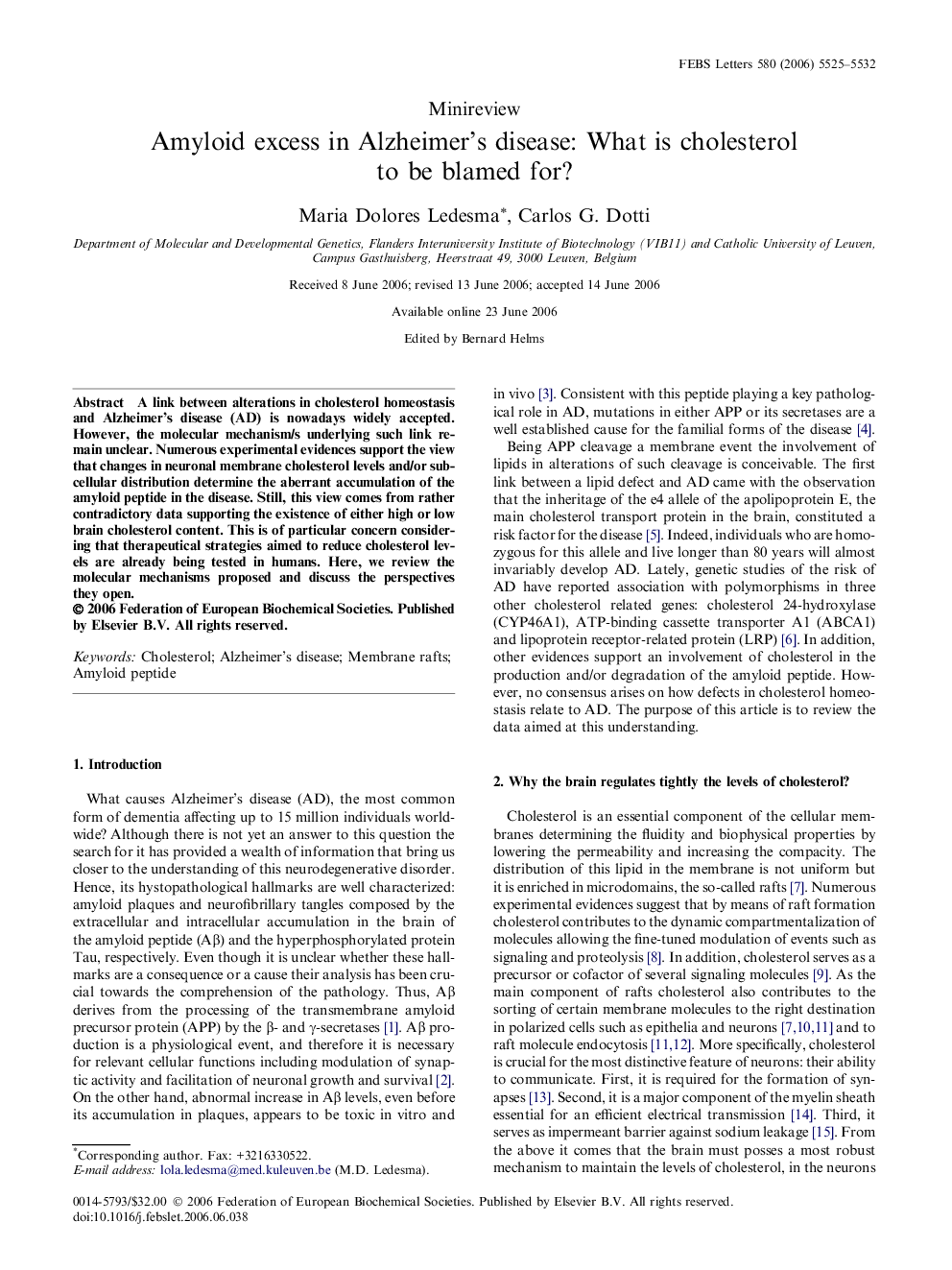| Article ID | Journal | Published Year | Pages | File Type |
|---|---|---|---|---|
| 2050414 | FEBS Letters | 2006 | 8 Pages |
A link between alterations in cholesterol homeostasis and Alzheimer’s disease (AD) is nowadays widely accepted. However, the molecular mechanism/s underlying such link remain unclear. Numerous experimental evidences support the view that changes in neuronal membrane cholesterol levels and/or subcellular distribution determine the aberrant accumulation of the amyloid peptide in the disease. Still, this view comes from rather contradictory data supporting the existence of either high or low brain cholesterol content. This is of particular concern considering that therapeutical strategies aimed to reduce cholesterol levels are already being tested in humans. Here, we review the molecular mechanisms proposed and discuss the perspectives they open.
